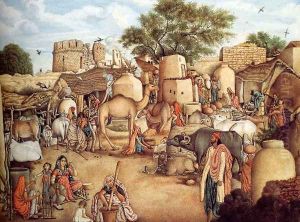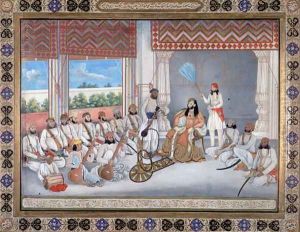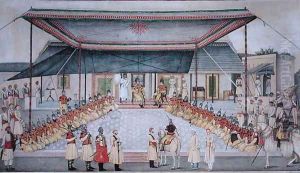Gulam Ali Khan Paintings
Ghulam Ali Khan was a prominent Indian painter during the first half of the 19th century, known for his expertise in the Company style of painting, which combined traditional Indian techniques with European realism. This style emerged during the period of British colonial rule in India, particularly under the aegis of the East India Company, as Indian artists began to work for European patrons and adapted their artistic practices to suit their tastes and interests.
Ghulam Ali Khan came from a family of artists, and he was part of the last generation of Mughal court painters. His work represents a transitional period in Indian art history, where the decline of the Mughal empire and the rise of British influence were affecting cultural and aesthetic norms in the region. After the fall of the Mughal dynasty, many artists from the royal atelier, including Ghulam Ali Khan, sought patronage among the British colonial officials and Indian nobility who wanted to document their lives and surroundings in the Indian subcontinent.
One of his most significant contributions was his work on the 'Fraser Album'. Commissioned by the British brothers, William Fraser and James Baillie Fraser, who were fascinated by the landscapes, people, and culture of India, the album contains numerous paintings by Ghulam Ali Khan and other artists. These paintings are detailed depictions of everyday life in India, including portraits of Indian nobles, British officials, and scenes from the streets of Delhi.
Ghulam Ali Khan's art is characterized by its meticulous detail, vibrant colors, and the fusion of Indian subject matter with European painting techniques. His paintings often feature elaborate costumes, architecture, and flora, rendered with precision and clarity. He is also noted for his portraits, which capture the personality and status of his subjects with a new sense of realism and individuality.
Ghulam Ali Khan's legacy continues to be recognized in the history of Indian art as a bridge between the Mughal past and the colonial present. His works are preserved in various collections, including the British Library and the Victoria and Albert Museum in London. They serve as valuable historical documents as well as works of art, offering insights into the cultural and social milieu of 19th-century India.


